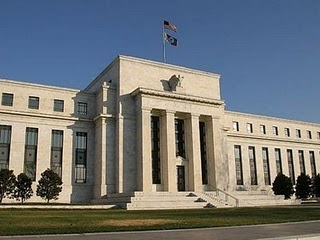Stocks Should Drop with Investor Sentiment
 The Dow just closed out the best January in 15 years, but the latest investor confidence survey may foreshadow a different sort of February and full 2012. State Street’s Investor Confidence Index declined, driven by European risk reduction, but U.S. investors are the most cautious of all these days. That stands in perfect contradiction to January’s performance.
The Dow just closed out the best January in 15 years, but the latest investor confidence survey may foreshadow a different sort of February and full 2012. State Street’s Investor Confidence Index declined, driven by European risk reduction, but U.S. investors are the most cautious of all these days. That stands in perfect contradiction to January’s performance. Our founder earned clients a 23% average annual return over five years as a stock analyst on Wall Street. "The Greek" has written for institutional newsletters, Businessweek, Real Money, Seeking Alpha and others, while also appearing across TV and radio. While writing for Wall Street Greek, Mr. Kaminis presciently warned of the financial crisis.
Our founder earned clients a 23% average annual return over five years as a stock analyst on Wall Street. "The Greek" has written for institutional newsletters, Businessweek, Real Money, Seeking Alpha and others, while also appearing across TV and radio. While writing for Wall Street Greek, Mr. Kaminis presciently warned of the financial crisis.Relative tickers: NYSE: DIA, NYSE: SPY, Nasdaq: QQQ, NYSE: DOG, NYSE: SDS, NYSE: QLD, NYSE: NYX, Nasdaq: NDAQ, NYSE: ICE, Nasdaq: ETFC, Nasdaq: SCHW, Nasdaq: AACC, NYSE: AMG, NYSE: AMP, Nasdaq: AMTD, Nasdaq: BGCP, NYSE: BK, NYSE: BLK, NYSE: CIT, Nasdaq: CLMS, NYSE: CME, NYSE: CNS, Nasdaq: COWN, Nasdaq: DHIL, Nasdaq: DLLR, Nasdaq: DUF, Nasdaq: ECPG, Nasdaq: EF, NYSE: EFX, Nasdaq: EPHC, NYSE: EVR, Nasdaq: EZPW, Nasdaq: FBCM, Nasdaq: FCFS, NYSE: FII, NYSE: FMD, NYSE: FNF, Nasdaq: FNGN, Nasdaq: FXCM, NYSE: GBL, Nasdaq: GCAP, Nasdaq: GDOT, Nasdaq: GFIG, NYSE: GHL, Nasdaq: GLCH, NYSE: GS, Nasdaq: IBKR, Nasdaq: INTL, Nasdaq: INTX, NYSE: ITG, NYSE: IVZ, NYSE: JEF, NYSE: JMP, NYSE: JNS, NYSE: KBW, NYSE: KCG, NYSE: LAZ, NYSE: LM, Nasdaq: LPLA, AMEX: LTS, NYSE: MA, NYSE: MCO, NYSE: MF, NYSE: MGI, Nasdaq: MKTX, Nasdaq: MRLN, NYSE: MS, Nasdaq: MSCI, NYSE: MTG, Nasdaq: NEWS, NYSE: NFP, NYSE: NNI, Nasdaq: NTRS, Nasdaq: NTSP, NYSE: OCN, NYSE: OPY, Nasdaq: OXPS, Nasdaq: PICO, NYSE: PJC, NYSE: PMI, Nasdaq: PNSN, Nasdaq: PRAA, NYSE: RJF, Nasdaq: SEIC, NYSE: SF, NYSE: SFE, NYSE: STT, NYSE: SWS, Nasdaq: TROW, NYSE: V and Nasdaq: VRTS.
Stocks Should Drop with Investor Sentiment
State Street’s (NYSE: STT) survey published Tuesday serves as a sort of confirmation of what I see developing for U.S. markets. The financial company’s measure of investor confidence showed its Investor Confidence Index fell to a mark of 92.4 globally in January, from 94.5 the month before. The decline was mostly driven by Europe, which we recently argued is already affecting the U.S. economy. Investor sentiment across the pond nearly drowned in it, sinking 10.1 points, to a mark of 91.6 in January. The reasons here are clear, as the euro area is near certainly in recession. Greece definitely is, with its GDP sinking in the mid-single digits at last check. But the trouble extends beyond Greece, as evidenced by the broad-ranging set of sovereign debt downgrades by S&P recently. The pain has already been felt across European shares, as the EURO STOXX 50 Price EUR gained 0.5% Tuesday and the iShares S&P Europe 350 Index ETF (NYSE: IEV) gained 0.7%.
 Asian investors are apparently feeling a bit better about stocks, with that segment measure up 3.3 points to 96.9 in January’s survey. Still, while the index is sitting below 100, it means even Asian investors are cutting back on risky assets. What troubles me most is what I see developing for U.S. stocks. The Investor Confidence’s North American component index showed the most risk aversion, with a measure of 89.8, down 0.1 from December. The way economic data has been unfolding of late, investor confidence should wane further alongside consumer confidence, which was reported lower Tuesday. In my view, deteriorating data should also turn the tide on the market rally that started in early October 2011. Tuesday’s performance by asset managers seems to agree, with the shares of T. Rowe Price (Nasdaq: TROW), Legg Mason (NYSE: LM), Janus Capital (NYSE: JNS) and Calamos Asset Management (Nasdaq: CLMS) each in the red Tuesday.
Asian investors are apparently feeling a bit better about stocks, with that segment measure up 3.3 points to 96.9 in January’s survey. Still, while the index is sitting below 100, it means even Asian investors are cutting back on risky assets. What troubles me most is what I see developing for U.S. stocks. The Investor Confidence’s North American component index showed the most risk aversion, with a measure of 89.8, down 0.1 from December. The way economic data has been unfolding of late, investor confidence should wane further alongside consumer confidence, which was reported lower Tuesday. In my view, deteriorating data should also turn the tide on the market rally that started in early October 2011. Tuesday’s performance by asset managers seems to agree, with the shares of T. Rowe Price (Nasdaq: TROW), Legg Mason (NYSE: LM), Janus Capital (NYSE: JNS) and Calamos Asset Management (Nasdaq: CLMS) each in the red Tuesday.State Street’s commentary seems to confer with my view, stating that investors in North America and Europe are maintaining “equity positions that can best be described as defensive.” For as long as the driver of caution was exogenous, despite Europe’s consumption of 20% of U.S. exports, I suppose American stocks could rise. But as the impact of European economic deterioration hits home, and as the ongoing realities within the U.S. economy once again become clear post holiday cheer, I expect further investor confidence deterioration to coincide with real capital damage.
Article should interest investors in SPDR Dow Jones Industrial Average (NYSE: DIA), SPDR S&P 500 (NYSE: SPY), PowerShares QQQ Trust (Nasdaq: QQQ), ProShares Short Dow 30 (NYSE: DOG), ProShares Ultra Short S&P 500 (NYSE: SDS), ProShares Ultra QQQ (NYSE: QLD), NYSE Euronext (NYSE: NYX), The NASDAQ OMX Group (Nasdaq: NDAQ), Intercontinental Exchange (NYSE: ICE), E*Trade Financial (Nasdaq: ETFC), Charles Schwab (Nasdaq: SCHW), Asset Acceptance Capital (Nasdaq: AACC), Affiliated Managers (NYSE: AMG), Ameriprise Financial (NYSE: AMP), TD Ameritrade (Nasdaq: AMTD), BGC Partners (Nasdaq: BGCP), Bank of New York Mellon (NYSE: BK), BlackRock (NYSE: BLK), CIT Group (NYSE: CIT), Calamos Asset Management (Nasdaq: CLMS), CME Group (NYSE: CME), Cohn & Steers (NYSE: CNS), Cowen Group (Nasdaq: COWN), Diamond Hill Investment (Nasdaq: DHIL), Dollar Financial (Nasdaq: DLLR), Duff & Phelps (Nasdaq: DUF), Encore Capital (Nasdaq: ECPG), Edelman Financial (Nasdaq: EF), Equifax (NYSE: EFX), Epoch (Nasdaq: EPHC), Evercore Partners (NYSE: EVR), EXCorp. (Nasdaq: EZPW), FBR Capital Markets (Nasdaq: FBCM), First Cash Financial (Nasdaq: FCFS), Federated Investors (NYSE: FII), First Marblehead (NYSE: FMD), Fidelity National Financial (NYSE: FNF), Financial Engines (Nasdaq: FNGN), FXCM (Nasdaq: FXCM), Gamco Investors (NYSE: GBL), GAIN Capital (Nasdaq: GCAP), Green Dot (Nasdaq: GDOT), GFI Group (Nasdaq: GFIG), Greenhill (NYSE: GHL), Gleacher (Nasdaq: GLCH), Goldman Sachs (NYSE: GS), Interactive Brokers (Nasdaq: IBKR), INTL FCStone (Nasdaq: INTL), Intersections (Nasdaq: INTX), Investment Technology (NYSE: ITG), Invesco (NYSE: IVZ), Jefferies (NYSE: JEF), JMP Group (NYSE: JMP), Janus Capital (NYSE: JNS), KBW (NYSE: KBW), Knight Capital (NYSE: KCG), Lazard (NYSE: LAZ), Legg Mason (NYSE: LM), LPL Investment (Nasdaq: LPLA), Ladenburg Thalmann (AMEX: LTS), Mastercard (NYSE: MA), Moody’s (NYSE: MCO), MF Global (NYSE: MF), Moneygram (NYSE: MGI), MarketAxess (Nasdaq: MKTX), Marlin Business Services (Nasdaq: MRLN), Morgan Stanley (NYSE: MS), MSCI (Nasdaq: MSCI), MGIC Investment (NYSE: MTG), NewStar Financial (Nasdaq: NEWS), National Financial Partners (NYSE: NFP), Nelnet (NYSE: NNI), Northern Trust (Nasdaq: NTRS), NetSpend (Nasdaq: NTSP), Ocwen Financial (NYSE: OCN), Oppenheimer (NYSE: OPY), optionsXpress (Nasdaq: OXPS), PICO (Nasdaq: PICO), Piper Jaffray (NYSE: PJC), PMI Group (NYSE: PMI), Penson Worldwide (Nasdaq: PNSN), Portfolio Recovery (Nasdaq: PRAA), Raymond James (NYSE: RJF), SEI Investments (Nasdaq: SEIC), Stifel Financial (NYSE: SF), Safeguard Scientifics (NYSE: SFE), State Street (NYSE: STT), SWS (NYSE: SWS), T. Rowe Price (Nasdaq: TROW), Visa (NYSE: V) and Virtus Investment Partners (Nasdaq: VRTS).
Please see our disclosures at the Wall Street Greek website and author bio pages found there. This article and website in no way offers or represents financial or investment advice. Information is provided for entertainment purposes only.

Labels: Economic-Reports, Economic-Reports-2012-01, Market-Outlook, Market-Outlook-2012-01












































